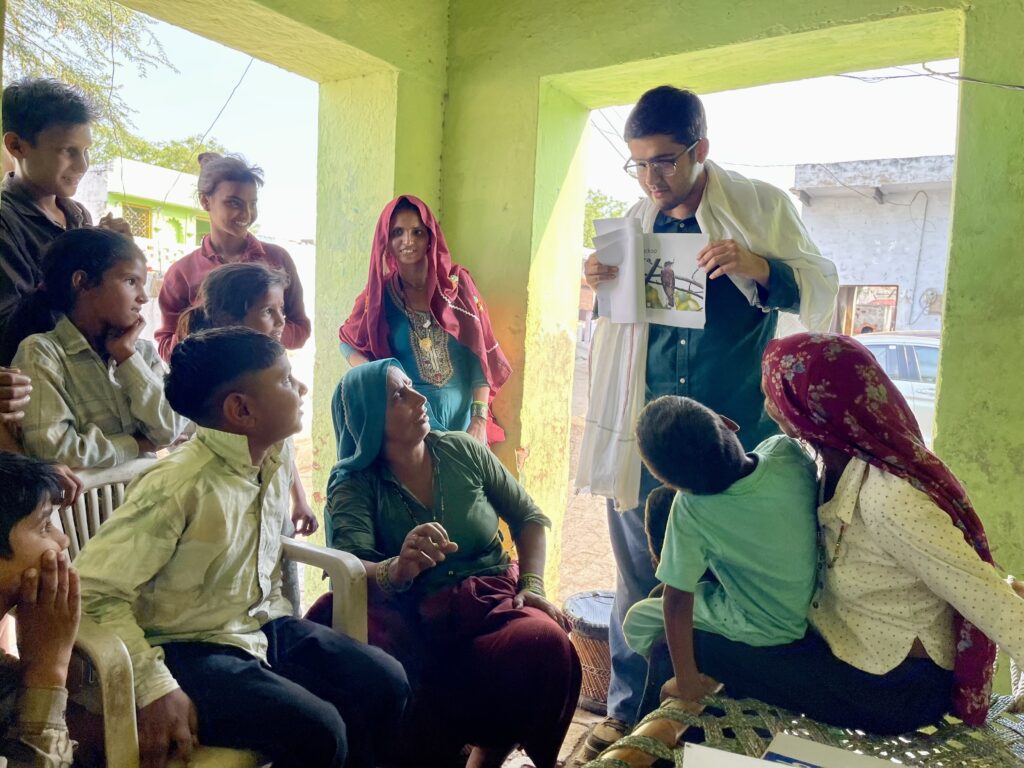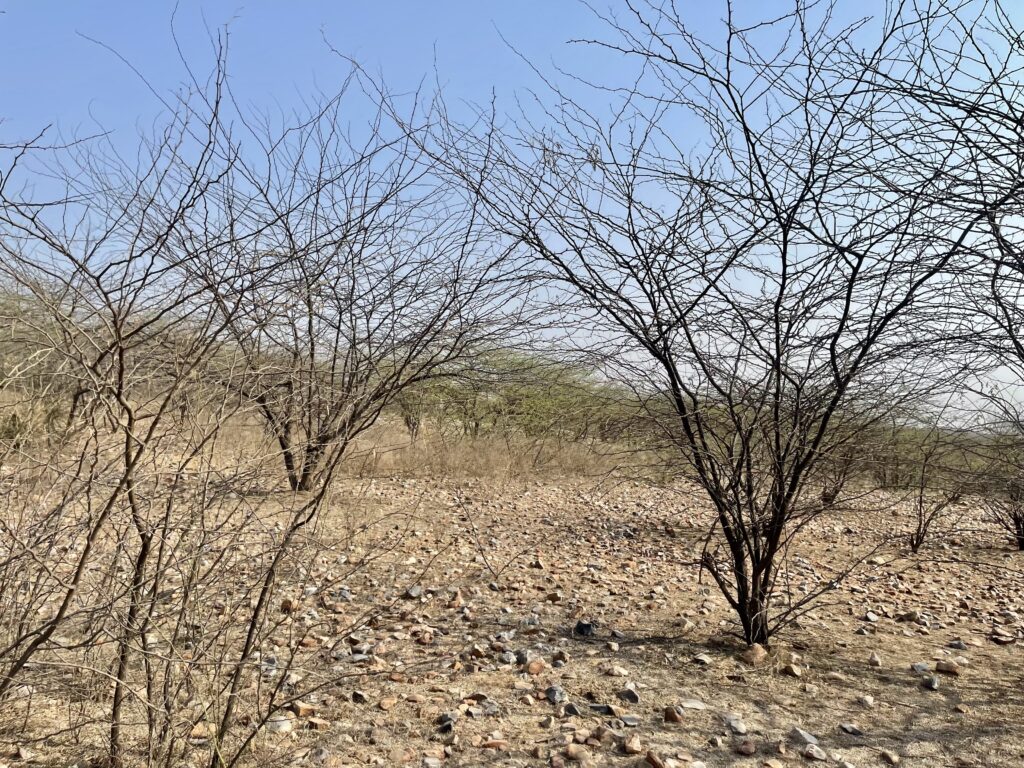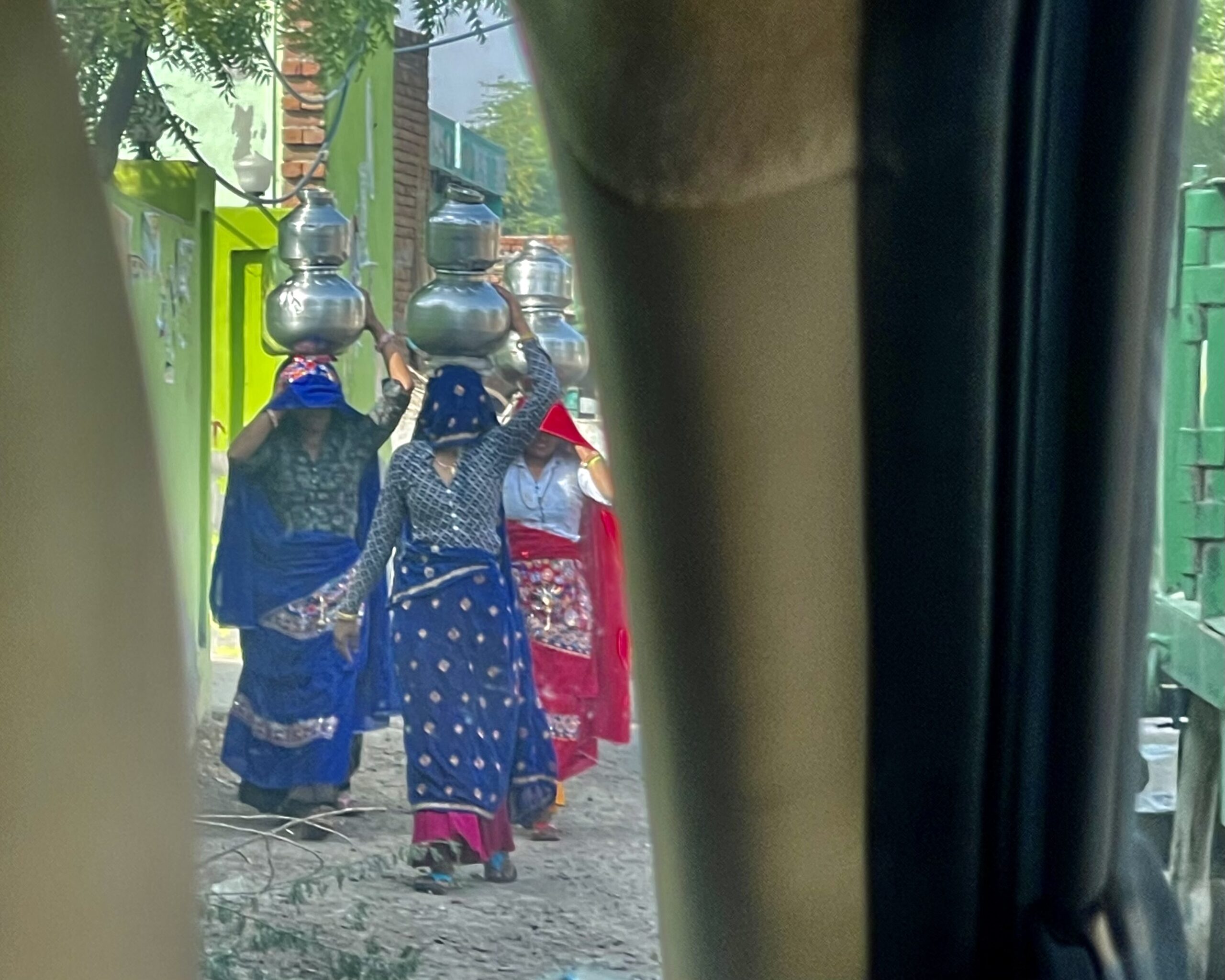Early this year, we embarked on a pilot project of ecological restoration in Mathura, nestled amidst the last stretch of the Aravali Range. This initiative stems from our commitment to tackle ecological imbalance, understanding its deep connection with community well-being. The 240-acre project site sits at the crossroads of spirituality, biodiversity, and bustling human activity. Securing crucial partnerships with the state government was a crucial first step, but even more important was building trust with the local villagers whose lives are intricately woven with the land.
Challenges and Learnings
The project unveiled a complex reality: a rich ecological heritage facing rapid degradation, fading traditional knowledge, and a high population density where lifestyles are increasingly disconnected from nature. We quickly realized that isolated restoration efforts wouldn’t be sustainable. Restored sites could face threats from surrounding communities after project completion. This challenge, we discovered, is not unique to our project but applies to many restoration initiatives in India’s vast and diverse landscape.

Therefore, we adopted a community-centric approach. Ecosystem restoration must be designed in sync with the needs and socio-economic dependencies of the people who rely on the land. For instance, in water-scarce regions, restoration efforts cannot overlook the community’s daily water needs. Similarly, restricted access to open spaces and forests for grazing or firewood collection wouldn’t be sustainable.
In Mathura, during initial meetings, some women expressed concerns about fencing the restoration area, fearing longer journeys to collect resources. Our team actively listened and addressed these concerns. Through collaboration, we developed a rotational grazing plan with the villagers. Our commitment to understanding their context and needs transformed initial skepticism into active participation. The villagers themselves have become champions for the project.
On a brighter note, the restoration community has built a valuable body of scientific knowledge of local flora and fauna, native species profiles, and restoration techniques suited to different climatic zones. This fundamental knowledge is crucial for further progress and scaling up our efforts.
Moving Forward: The Need for Innovation and Collaboration
As we move ahead with this pilot project, we are actively seeking solutions to shape the future of ecological restoration in India:
- Innovation: We need innovative program designs, approaches, and institutional models for implementation. This includes exploring new financing mechanisms and seamlessly blending ecological restoration with the needs of the people. How can we catalyze such innovation?
- Collaboration: This cause is bigger than any individual or institution. We need a collaborative spirit among partners – government agencies, ecological experts, social scientists, development practitioners, and the community itself. How can we foster stronger collaboration and convergence for large-scale impact?
- Scalability: To achieve our restoration targets, we need scalable models that address India’s diverse ecosystems while leveraging indigenous knowledge systems and cultural strengths.
- Resources: Large-scale impact requires substantial resources – technical, financial, and human. How can we mobilize the necessary resources? Are there institutions equipped to support innovative restoration efforts? Do we have a sufficient number of skilled personnel and the institutional framework to achieve large-scale restoration?
- Future Readiness: We need to reignite nature mindfulness in our collective consciousness. Children are the future, and they hold the key to integrating nature back into our daily lives. How can we prepare them for this responsibility? Are educational frameworks incorporating nature education? Is there a sufficient number of qualified nature educators with access to high-quality, native-language educational content? What institutional support is needed?
We are approaching the midway point of the UN Decade on Ecosystem Restoration. It’s clear that the entire restoration ecosystem itself needs strengthening. This requires substantial effort, robust policies, and widespread awareness.

Join the Conversation!
Share your expertise in ecological restoration in the comments below or join our upcoming webinar on community engagement. How can we collectively move towards a future where ecological restoration and community well-being go hand in hand?

